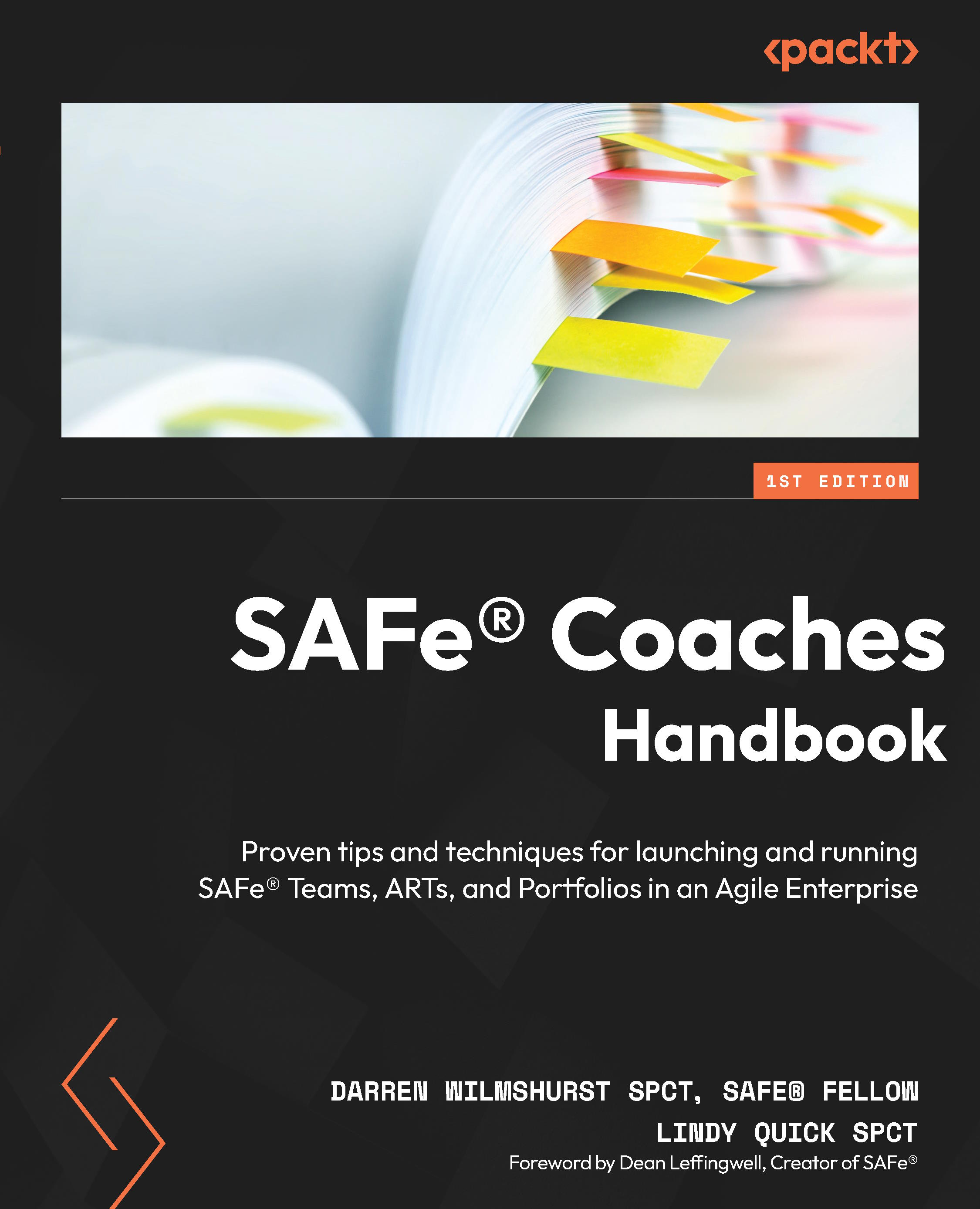Agile Team Roles and Responsibilities
As mentioned previously, we have two specialty roles on our Agile Teams. These two individuals work together to help the team become high-performing and to deliver value to the customer in small incremental batches.
Pro tip
In SAFe® 6.0 the Scrum Master role has been retitled to Scrum Master/Team Coach to reflect that SAFe® embraces not just Scrum but also Kanban and other team execution methodologies.

Figure 2.2 – Scrum Master/Team Coach and Product Owner Responsibilities (© Scaled Agile, Inc.)
Due to the importance of each of these roles, let’s take a look at each in more detail as well as outline the responsibilities for our Agile Teams.
Product Owner
The PO role is a particularly challenging role in that it often requires both business and technology knowledge and experience. The individual has to manage numerous relationships including with the team, with customers...
































































